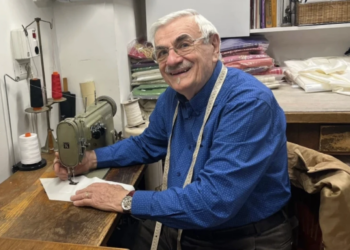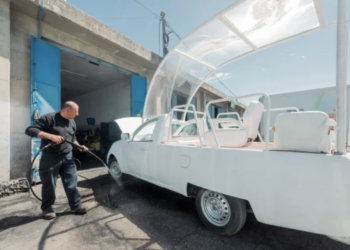CNA Staff, May 7, 2025 /
13:00 pm
When Pope Leo XIII was elected in 1878, the story goes that he wept. At age 67, he thought he was too old for the job. (He lived to be the second-oldest pope and died at the age of 93).
When in 1958 Pope John XXIII looked in the mirror at his white vestments — pinned in various places due to his large size — he joked that he would be a “disaster on television.”
It’s no wonder that, for the newly-elected popes throughout history, the antechamber of the Sistine Chapel holding the papal garments became more than just a room in which to change their clothes.
The small room where the newly-elected pope changes from the red clothes of a cardinal to the white vestments of a pope is known as the “Room of Tears,” (“Stanza delle Lacrime” in Italian). In case that wasn’t weighty enough, others call it the “Crying Room.”
The Room of Tears is just a few feet away from the Sistine Chapel, where the monumental decision of the papal election is made.
After the pope-elect accepts his role, thus ending the conclave, the cardinal dean asks him what his papal name will be. Following the decision, the newly elected pope has a few moments in the Room of Tears, where he is dressed in his white papal vestments. Moments later, he will look out upon St. Peter’s Square, greeting the world as pope for the first time.
The antechamber holds three sizes of papal vestments — small, medium, and large — as well as boxes of papal shoes.
First images of the ‘Room of Tears’, or ‘Stanza del Pianto’: the space next to the Sistine Chapel where the newly elected Pope withdraws for his first vesting. Here, he puts on the white cassock and pauses in silence. The room is named for the tears many popes have shed before… pic.twitter.com/Xm2cnaNVBW
— EWTN Vatican (@EWTNVatican) May 6, 2025
But beyond just the practical, the small space holds memorabilia and documents as well as the vestments of various popes over the years.
Pope Francis recalled in his 2025 autobiography “Hope” that after entering the sacristy, he found his episcopal ring in his pocket. He avoided the red velvet cape, known as a mozzetta, and the red shoes — “I have orthopedic shoes; I’m rather flat-footed,” he wrote.
While the room is usually locked, sometimes people are able to visit the room, which is just to the left of the Sistine Chapel when facing the altar.


















